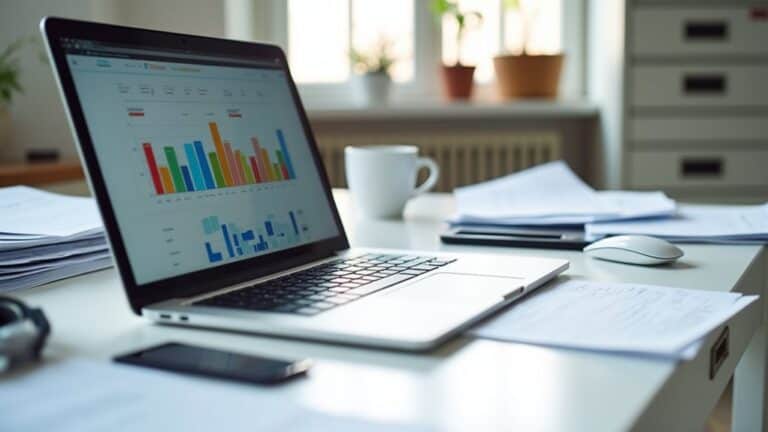End-to-end processes enable businesses to increase transparency within the organization and introduce efficiency in their operations. These apply to different teams and employees within an organization. With such a vast topic the most common question asked is “who is responsible for end-to-end processes?”
A process owner is dedicatedly responsible for an end-to-end process. They are responsible for developing, implementing, and controlling a process’s outcomes. They use all technical and financial resources available to ensure the smooth running of an end-to-end process.
Enforcing processes and ensuring standardization has been a critical topic in the business community for years.
End-to-end process implementation is, to some extent, the solution to this problem. It determines who is responsible for what and ensures work gets done on time and efficiently.
Who’s Responsible for the End-to-End Processes
In larger organizations, two leading roles ensure a process runs effectively:
- the process owner;
- the process manager.
In smaller and less complex organizations, this role can be merged and performed by the same person.
Whether you want to keep this to a single individual or separate it out depends on your business’s needs and demands. The responsibilities associated with both roles are overlapping, so it’s important to understand the focus of their roles.
Let’s look at how these two roles are different yet very similar to one another:
Process Owner
A process owner is responsible for owning a process. They are responsible for the entire process, from developing and executing the strategy to ensuring favourable outcomes for the business.
Process Manager
The process manager takes more of an overseeing role, with the responsibility of managing the end-to-end execution of the process. They facilitate day-to-day activities, have operational control and assess the process for areas of improvement.
Process Owner Vs. Process Manager
Even though both roles can be easily merged, they have different areas of focus, as detailed below:
| Process Owner | Process Manager |
| Defines the process and its objective Ensures process design optimization | Manages process from end to end and reports on activities |
| Ensures alignment between stakeholder’s objectives and process design and objectives | Maintains process map and documentation |
| Sets KPIs and performance metrics and reports on them using dashboards and reports | Manages and trains resources involved in a process. |
| Manages the improvement of process | Resolves issues and problems with process |
| Understands the legal aspects of the process and its impact on the business | Responsible for change management and change related communication |
| Reviews KPIs and identifies improvement areas | |
| Communicates with stakeholders for smooth running of processes |
If you have a small and less complicated organization, assigning both roles to one person is recommended. As your organization grows and processes get elaborate and complicated, you can separate both roles for better strategic planning and execution.
7 Key Traits of a Successful Process Owner
Process ownership is a huge responsibility. As a business owner or stakeholder, you will rely heavily on these process owners to execute crucial business processes for the organization’s success.
A successful process owner must have the following characteristics to execute their role effectively.
Communication skills
Developing a process and implementing it requires good communication skills. The process owners you choose should be good at convincing stakeholders and employees. They should have the ability to drive changes through effective communication.
When choosing a process owner, ensure that the candidate has good command over negotiation, conflict resolution, and communication skills.
Influence and Authority
As processes often overlap different teams and departments, it’s crucial that a process owner can work with all employees and stakeholders. They don’t need to be part of the management team, but they should be recognised as having authority over the process they own.
The ideal candidate will be someone who can explain all aspects of their process, can consider how future projects will impact this area and will be consulted before the execution stage.
An individual can be great at designing and mapping out processes, but if they can’t drive and deliver changes to established procedures they will fail at process management.
Choose an individual that is considered influential and a good source of information within your organization.
Change Management
A process owner will have to do a lot of change management. They need to be able to constantly look for improvements and also require quick problem-solving skills when something goes wrong.
Changing existing processes or even implementing new ones is a difficult task and they must be reliable change-makers who can understand where and what changes are required and communicate these effectively to everyone affected and involved.
The process owners you choose need to be dynamic individuals who aren’t afraid to take on new changes and challenges and implement them.
Process Knowledge
Something of a given, but it’s worth restating the obvious: If you’re making someone the owner of a process, make sure they actually have enough knowledge to fulfil the role.
They should have in-depth knowledge of every step, so they can handle queries and make improvements where required.
Without being appointed to the role, you may find you already have a go-to person for a specific area, and it’s just a case of formalising this extra responsibility.
Business Knowledge
When a process is developed or changed, it impacts the business and its employees. The process owner you choose should have the skills and ability to understand these impacts.
A process owner also needs to understand the dynamics of the overall business and how different teams and roles collaborate. They simply cannot operate in silos. They need to be able to navigate changes and their effects.
This can be the hardest element to get right as those closest to, and with the deepest knowledge of, specific business areas often don’t have the opportunity to gain an understanding of the wider business.
If you’re in the planning stage of introducing this as a role it’s recommended you consider implementing a department rotation scheme, where candidates you’re considering go to the stages before and after the area they work in to gain a better understanding of what happens.
Social Competencies and Self Awareness
Being ‘self aware’ may not sound work related, but it’s one of the ingredients that makes this role work. If you are self-aware and know what your strengths and weaknesses are, then you can make better decisions about how to use them in a way that will benefit the company.
You have to be able to look at yourself objectively.
This can be a huge help when communicating and handling relationships with different kinds of employees. As they work in other areas they need to be able to recognise where their competencies fall short and whether they require training to catch up to the latest trends in the industry.
ICT Knowledge
As with almost all jobs it’s no longer enough to have sound business knowledge, the role also requires a moderate level of understanding when it comes to technology.
Primarily, they should be able to proficiently use office software like Excel, PowerPoint, Word, and other communication tools used within the company.
If there is a self-management tool that allows for automation to be used they should have authority to make changes as required. If automation is handled by a dedicated team they should have the authority to request changes be made.
Six Steps for Developing a Business Process
An essential part of a process owner’s job role is to design and map out the processes they will be implementing.
The six steps that enable a process owner to develop a business process are:

Step 1: Assessing
Look at where the process currently stands. Is there an existing process, or will it need to be developed from scratch?
The process owner will document each step, who is responsible for these steps, and determine the frequency at which the process is recurring.
Due to the nature of the assessing stage it’s very likly that problems will start to be detected, improvements spotted, and ideas formed ready for the next step.
Step 2: Designing
With the exiting state mapped out it’s time to review and design and changes required. The process owner will design a process iteration with different variations to solve the problems identified.
This could be done as a stand-alone objective or as part of a wider project, for example the introduction of a new product resulting in changes to an existing order fulfilment process.
A good process design should introduce efficiency in the workflow and reduce issues in the existing process.
It’s a good idea to use mapping software as a way to easily present the design. This also allows different variations to be created, for example a high level view which is presented to senior management vs a detailed step by step map presented to front line staff and other stakeholders.
Step 3: Modelling
As the name suggests, this phase is to test out the process design with some predictive data. It is crucial to ensure the validity of data to obtain reliable results. Variable data is used to determine its effects on the process.
For example, how can reducing or increasing the number of employees after automating a task impact productivity and efficiency?
In some cases a small scale trial is a great way to test the new process before a mass rollout. Getting a sample group of end users to test the new process in real life will be far more valuable than a hypothetical stress test.
The results from this stage will help the stakeholders determine whether it is even worth introducing the process change and will feed back into the design stage if alterations are required.
Step 4: Implementing
This stage requires excellent planning and co-ordination with all involved. The design and modelling phase changes will need to be planned out and implemented in this stage.
A change management plan should be used to introduce process changes and determine their potential impact on the business.
This includes:
- Communicating changed roles and responsibilities
- Informing vendors and customers
- Updating systems
If step 4 isn’t handled correctly you are likely to incur additional costs and can lose credibility among workmates.
Step 5: Monitoring
This is part of the ongoing business as usual tasks for a process owner. They must constantly evaluate the process through data modelling techniques and software to review the potential outcomes.
Key performance indicators (KPIs) must be developed, and each stage of the process must be evaluated against them to measure its effectiveness.
Employee feedback must also be taken into account during this stage. This will help drive insights that will only improve the process and its usability in the long run.
Step 6: Modifying
With ongoing monitoring in place it should be possible to identify further modifications that will deliver additional improvements.
If a significant change is required, then the process should be run by the mentioned six-step cycle again.
Process management is a living, breathing process. It is pertinent that the person you choose as a process owner understands that and has the ability to stay agile and make changes whenever and wherever required.
This will also mean that the process owner will need to be able to negotiate and communicate these constant changes to the employees and stakeholders of the business.
Benefits of Having Dedicated End-to-End Process Owners
The key benefits this approach should deliver are increased efficiency and revenue growth.
However those aren’t the only benefits:
- Greater accountability for each step in the process
- Constant monitoring and modification of processes
- Proper change management processes and policies in place ensure smooth transitions
- A proper definition of roles and responsibilities
- Reduced costs of doing business due to risk mitigation
- Accurate data for better decision-making
- Increased compliance with processes and roles
- Better communication with and timely escalation to stakeholders
- Keeps track of process KPIs to identify improvement opportunities
As with any other role, it is important to remember that process owners also have their limitations. They rarely have control over the operational aspects of the process. They are responsible only for ensuring the effectiveness of a process.
The role depends greatly on the individual’s negotiation and communication skills rather than the power from their position within the organization.
Should Process Owners Use Software for Process Management?
I’ve already touched on this above, but I think it is worth expanding on if you’re new to process mapping and management.
Tools such as Enterprise Resource Planning (ERPs) and Business Process Management software enable process owners to do their jobs more effectively.
Here are a few key benefits of implementing the use of these tools for your business:
- This software reduces the cost of hiring additional employees to carry out specific tasks
- They enable quick implementation of automation for tasks and entire processes
- They enable quick processing of data
- They increase the overall efficiency of doing work and improve outcomes
- They make reporting stats easy for process owners and stakeholders alike
If you’re just starting out in this area this might sound overcomplicated. If all you’re looking to do is create visual representations then make use of software such as Microsoft Visio (which you may have access to via an existing licencing agreement) or the excellent SketchWow (which is used to create the diagrams on this site).
These tools allow you to help others understand the process life cycle and how it fits in to other areas of the business. Keeping a ‘master plan’ gives others something to reference. They’re very valuable to project managers, training providers, senior management, really anyone who needs to understand how an element of the business works.
Frequently Asked Questions
Why is having process owners important?
Process owners look at the bigger picture and can monitor a process closely. Being closely involved with a process allows them to see where improvements are required and control their implementation for a successful outcome.
What is not included in the responsibilities of a process owner?
Process managers are not responsible for the operational end of the business. Their sole responsibility is to ensure the effectiveness and efficiency of the process.
Can a process owner be an active team member too?
It is highly likely that a process owner has some other role as well, be it manager, team leader or a non-leader position. This is common where the selected candidate has the knowledge required because of the position they hold, and so it often makes sense for them to retain that position.
There are also cases where process owners are only responsible for implementing changes and making improvements suggested by other teams.
Final Thoughts
Process ownership is a crucial role within an organization. Choosing a process owner is tricky because you have to ensure they have the right capabilities to do the job effectively. We hope this article helps you see the importance of process owners and how you can choose one for your business processes.





